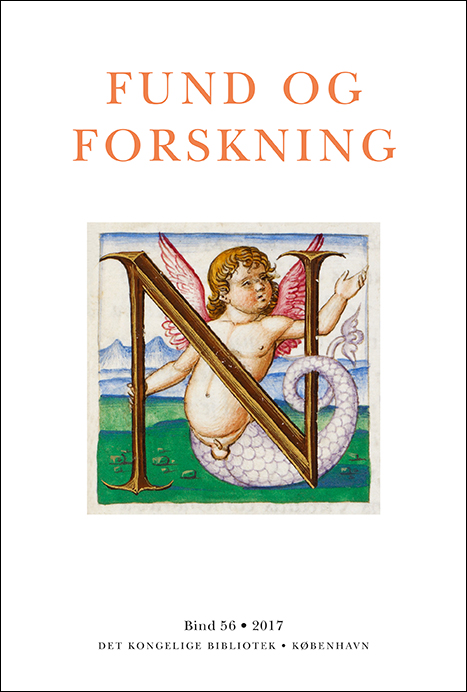Representing the Ancient Past in the Fifteenth-Century Maffei Tacitus (MS GKS 496 2º)
DOI:
https://doi.org/10.7146/fof.v56i0.118928Resumé
Marina Vidas: Representing the Ancient Past in the Fifteenth-Century Maffei Tacitus (Copenhagen, Royal Library, MS GKS 496 2º)
The focus of this article is a splendidly illuminated Italian Renaissance manuscript, MS GKS 496 2º, in the collection of the Royal Library, Copenhagen, containing the text of Annals (Books 11–16, 35) and Histories (Books 1–5, 14) composed by the Roman historian Tacitus (c.55–c.120). The coats of arms, which are found at the bottom of folio 1r, clearly identify the owner of the manuscript as belonging to the Maffei family of Rome and an inscription on f. 196r states that the text was emended by the humanist scholar and scribe Ludovico Regio of Imola, who is known to have copied and/or annotated at least five manuscripts for Agostino Maffei (1431–1496). The article argues that the intended reader of the Copenhagen Tacitus was Agostino Maffei, who in Rome during the 1480s and 1490s was actively commissioning copies of and collecting manuscripts with texts by ancient Greek and Roman authors. The article discusses the context for the commission and subsequent annotations to the text undertaken by Ludovico. It is also pointed out that the hand which executed the headings and incipits of the Annals is very reminiscent of that of the celebrated Paduan scribe Bartolomeo Sanvito (1435–1511), who rubricated at least one manuscript and possibly another for Agostino Maffei. In addition, an in-depth analysis is made of the work of the illuminator: the full-page frontispiece, f. 1r, and ten miniatures at the opening of each of the books of Tacitus’ works, ff. 11v–187r, which have been attributed by art historians to either Giovan Pietro da Birago (fl. c.1463–1513) who, by 1490, was the leading illuminator at the Sforza court in Milan, or to the hand of an unknown master, who was influenced by Birago.
The article discusses sources for the all’ antica illuminations and points out the artist’s reliance on pictorial precedents. But while many architectural frontispieces in fifteenth-century Renaissance manuscripts have a monumental quality and a celebratory air, the opening page of the Copenhagen Tacitus exposes the fragmentary state of the remains of the past. The ruin, along with the truncated sculptures and mythological beings accompanying the initials, might have been intended to provoke meditations on the past and a longing for the great things that once existed. It is also suggested that images in the Tacitus manuscript visualize lines of the text which they accompany and that attention is drawn to the artist’s skill as a painter as well as to his creativity.
Light is also shed on the similarities and differences between the miniatures in the Maffei Tacitus and those in books attributed to Birago or to the Master of the Barozzi Breviary. It is assessed that the figure style employed in the Tacitus is quite close to that of the master who painted the illuminations in the Barozzi Breviary (Vienna, Österreichische Nationalbibliothek, Inc. 4, H.63) and to that of Birago in his signed frontispiece of the Sforziada (Warsaw, Biblioteka Narodowa, Inc. F. 1347). However, there are some notable differences in the execution of hair, proportions of the figures’ bodies and the degree of activity in the compositions in the Copenhagen and Warsaw volumes. It is therefore concluded that the Maffei Tacitus was more likely to have been painted by the Master of the Barozzi Breviary than by Birago. Lastly, because Agostino Maffei was a man who was interested in many facets of the ancient past and involved in all aspects of manuscript production, it is suggested that he might have expressed some ideas about how the Tacitus should be illuminated and that the manuscript that exists today in Copenhagen incorporates these wishes.


